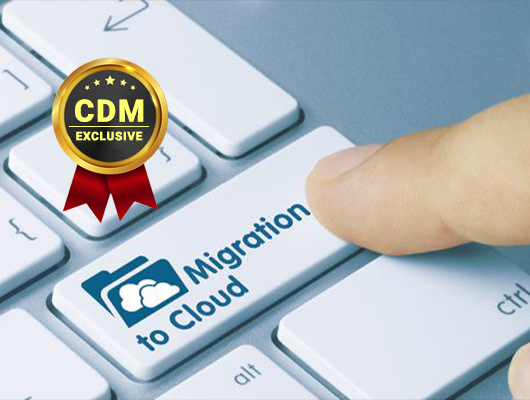- Better Together: How MFA and Strong Password Practices Can Help Bolster Security
- “美 CISO 평균 연봉 6억,상위 1%는 60억원 넘어···보안 예산은 여전히 부족” IANS 설문조사
- 아웃시스템즈, 매출 5억 유로 돌파 및 신임 CEO 선임 발표
- 정철환 칼럼 | 변화의 바람에 맞설 것인가? 따를 것인가?
- Best home automation systems 2025: I'm a smart home reviewer and these are the top ones
Data Migration Security – Cyber Defense Magazine

What to Know
By Devin Partida, Cybersecurity Writer, ReHack Magazine
If you’re planning a data migration soon, there are some crucial things to do to increase the likelihood of keeping it safe. Migrating data means moving it between locations, formats or locations.
Prioritizing data security is essential for successful outcomes. However, doing that is not as straightforward as some people think. These tips will help with that all-important matter.
- Confirm the Location of Your Critical Data
If your data migration includes critical content, do you know where all of it resides? If not, you’re in the majority. Research indicates that 82% of respondents from organizations did not know where those enterprises kept all the critical data. The same study showed that 55% cited data fragmentation across multiple databases as slowing their progress.
That’s a data security risk because it could give the false impression that all the most important information got safely moved to the new destination. That may not be a valid conclusion to make. Audit the data before a migration happens. Doing that helps ensure you find all the necessary records. Tools also exist to help find duplicate or obsolete content that you can delete before starting to move the data.
- Plan a Phased Migration
When learning about data migrations, you’ll almost certainly come across details about a process called Extract, Transform and Load (ETL). It encompasses the three main stages that happen when moving information.
The extract portion involves collecting data and reading it from a database. The transform step then converts the extracted data from its previous form to the format required by the new location. Finally, the load step writes the data to the target database.
Keep security in a top-of-mind position by opting for a phased approach. In other words, decide to migrate your least-important data first. Focus on the material that has business value but does not include sensitive details.
You should also hold off on migrating any data deemed essential to your company’s operations. Doing that allows you to vet the security of the data host’s systems and avoid major unforeseen problems.
- Become Familiar with Applicable Cybersecurity and Encryption Protocols
A frequently chosen kind of migration occurs when companies shift some of their on-premises information to cloud data centers. This decision is often a smart one from a data security standpoint. Cloud platforms usually include dedicated encryption and cybersecurity protocols that customers automatically have access to through their service packages.
However, consider how you could beef up cybersecurity and data encryption with additional measures applied by your company. Taking that approach is especially wise when the information in question is highly sensitive or includes customer details.
When people get word of data breaches or other security-related matters affecting their details, they rapidly lose trust in the involved companies.
- Back-Up the Data First
As you map out the schedule for data migration, don’t start moving the content before backing up all the files. Even if things go relatively smoothly, you could still end up with missing, incomplete, or corrupt files. Having the data backed up supports data security by letting you restore content when needed.
Weigh the pros and cons of all the options available to you before choosing one. For example, if you’re only migrating a small number of files, putting them on a USB drive might be the simplest possibility. A mirrored drive or a cloud backup service is likely more appropriate for more extensive migration efforts.
- Maintain All Necessary Compliance and Access Requirements
If your data migration involves keeping some content in on-premises facilities, and moving the rest to the cloud, ensure that your security standards are identically tight across those locations. A common way to do that is to set up security policies for aspects like access control. Once you lay out the desired security environment for the data, check that the cloud host meets or exceeds them.
Verify that your data security plans include specifics for all applicable laws that dictate how to handle customer information, such as the General Data Protection Regulation (GDPR). Other data privacy stipulations relate to patient medical data. Your company must continue to abide by the rules before, during, and after a migration.
Fortunately, automated tools can make that easier by automatically applying the parameters you set.
Cutting Data Migration Risks
Many of today’s businesses are extremely dependent on data. The trouble is that the information possessed by a company could grow to such a gigantic amount that migrating it becomes too much of a hassle or prohibitively costly.
Moving smaller databases of information still include risks that could threaten data security. However, by following the suggestions here and doing more research to determine which challenges your company faces, you can reduce data migration problems.
About the Author
 Devin Partida is a cybersecurity and technology writer. She is also the Editor-in-Chief at ReHack.com.
Devin Partida is a cybersecurity and technology writer. She is also the Editor-in-Chief at ReHack.com.

